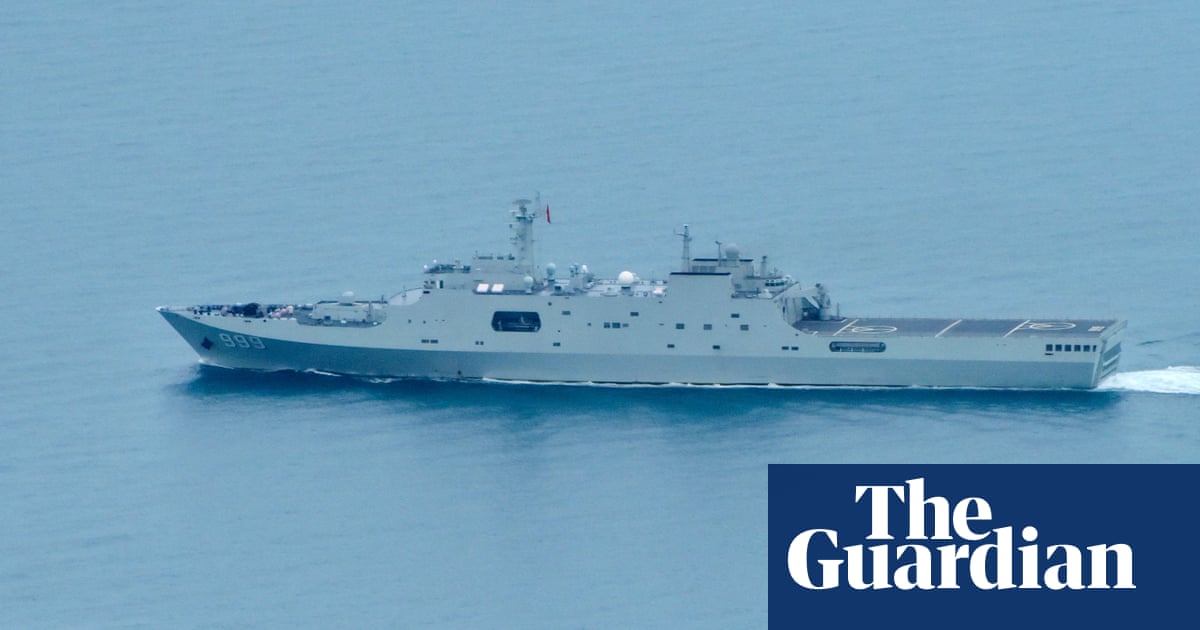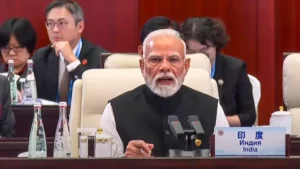Laser incident involving Chinese warship most serious in growing trend, ADF says
The Australian defence force has confirmed an “increase in the use of lasers by some vessels” but regards the latest incident involving a Chinese warship as “more serious”, officials have revealed.
Experts said the shining of a laser at an Australian surveillance aircraft by a People’s Liberation Army Navy (PLAN) warship last week represented an escalation from a previous incident in the South China Sea in 2019 when Australian helicopter pilots were forced to land as a precaution.
The prime minister, Scott Morrison, said on Monday that “all the countries in our region” deserved an explanation from the Chinese government over activity he branded as “dangerous, unprofessional and reckless for a professional navy”.
Labor also condemned the incident, after the F disclosed that a PLAN warship had used a laser to illuminate an Australian P-8A Poseidon surveillance aircraft on Thursday. The Australian aircraft had been tracking two PLAN vessels that were sailing east through the Arafura Sea, north of Australia.
When asked by Guardian Australia to detail previous incidents, a Defence spokesperson said assets operating across the Indo-Pacific region “have observed an increase in the use of lasers by some vessels”.
“The increasing prevalence of the inappropriate use of lasers is concerning as it poses a potential safety risk to all those operating in the region,” the spokesperson said.
“Defence deems this incident to be more serious than previous incidents.”
Senior Australian diplomatic staff in Beijing have raised the latest incident with China’s ministries of foreign affairs and national defence, the spokesperson said.
Defence and Department of Foreign Affairs and Trade officials have also raised it with the Chinese embassy in Canberra.
Dr Euan Graham, a maritime security expert at the International Institute for Strategic Studies in Singapore, said the Australian government’s response indicated that “this act has crossed a red line in terms of what Australia considers normal or acceptable and it’s decided to name and shame accordingly”.
It was “an extremely serious incident” that risked “injury or worse”, Graham said.
In 2019, Graham was one of several academics who travelled on HMAS Canberra from Vietnam to Singapore in the South China Sea, when helicopter pilots reported having lasers pointed at them.
The Australian vessel was being tailed by Chinese warships – something that is “standard procedure” when foreign navies pass through areas that Beijing claims within the South China Sea – but there was no suggestion in that case that the lasers were shone by the Chinese military.
Graham asked at the time whether it was “the sort of coordinated harassment more suggestive of China’s maritime militia”.
Thursday’s incident was “obviously a step up” because it involved a military-grade laser and was clearly from a Chinese naval vessel, Graham said. That was why the Australian defence department had issued such a “robust response”.
If pilots were “dazzled”, that could affect their ability to safely land the aircraft but Graham said the more serious possibility was the use of the laser could be a precursor to firing a weapon.
China’s Global Times newspaper cited an unnamed “analyst close to the PLA” as saying almost all modern warships “are equipped with laser rangefinders, which are a type of measurement tool used to tell distances between objects”.
“They are also used for civilian purposes and are of little danger, the anonymous analyst said, noting that the Australian military knowingly hyped this with the aim of throwing mud at China,” the article said.
Foreign ministry spokesman Wang Wenbin told reporters at a regular briefing in Beijing that “the Chinese vessel sailing in the high seas complies with relevant international law and international practice and is fully legitimate and legal”.
“We urge the Australian side to respect Chinese vessels legitimate rights in accordance with international law in relevant seas and stop maliciously spreading disinformation in regards to China,” Wang said.
Graham said the Chinese vessels were legally entitled to pass through the Arafura Sea and Australia was also legally able to monitor those ships but the use of the laser “puts the Chinese navy in a very bad light”.
He said the likely motivation was “to create a distraction that would interrupt the Australian attempt to conduct its surveillance operations” and “make life difficult for the Australian pilots and to ward them off”.
Prof John Blaxland, an expert in international security and intelligence studies at the Australian National University also described the incident as an apparent “escalation”, as laser pointing could be “separated from firing a missile with hostile intent by a mere split second”.
Morrison told a Tasmanian radio station: “Could you imagine if that had been an Australian frigate going through the Taiwan Strait that pointed a laser at a Chinese surveillance aircraft, or indeed a British ship or a Japanese ship or an American, US ship, could you imagine what the reaction would be?”
Labor urged the government to convey a strong bipartisan message of condemnation to Beijing and sought an “urgent” briefing.
The incident comes amid heated debate about national security in the lead up to election due by May.
In 2018, the US Department of Defense said two US airmen had suffered “minor” injuries as a result of the use of what the Pentagon believed were Chinese-deployed lasers in Djibouti.
Additional reporting Reuters









